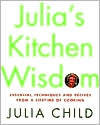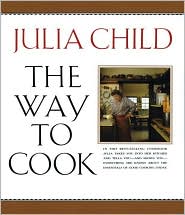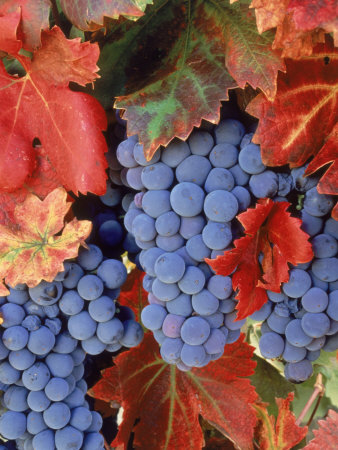Recipe of the Day Categories:
 Recipe Home
Recipe Home
 Recipe Index
Recipe Index
 Recipe Search
Recipe Search
 Appetizers
Appetizers
 Beef
Beef
 Beverage
Beverage
 Bread
Bread
 Breakfast
Breakfast
 Cake
Cake
 Chocolate
Chocolate
 Cookies
Cookies
 Fish
Fish
 Fruit Fruit
 Main
Dish
Main
Dish
 Pasta
Pasta
 Pies
Pies
 Pork
Pork
 Poultry
Poultry
 Salad
Salad
 Seafood
Seafood
 Side Dish
Side Dish
 Soup
Soup
 Vegetable
Vegetable
 Surprise!
Surprise!
![[Flag Campaign icon]](http://a1032.g.akamai.net/f/1032/81/30m/www.gamesville.lycos.com/art_gv/ribbon_small.gif)

Bon Appetit
Keith Mallett
Buy This at Allposters.com

Sur La Table
Special Offers

Vino
Joe Esquibel
Buy This Allposters.com
 
Julia's Kitchen Wisdom: Essential Techniques and Recipes from a Lifetime in Cooking

A Glass of Red...
Armin Faber
Buy This at Allposters.com
 
Mastering the Art of French Cooking Boxed Set: Volumes 1 and 2
|
|
Your
patronage of our affiliate
partners supports this web site.
We thank you! In other words, please shop at LBC
Gift Galerie!


The Kitchen Table
Giclee Print
Chardin,...
Buy at AllPosters.com

La Belle Cuisine
Pot Roast of Beef
Master Recipe
 
The Way to Cook
by Julia Child, 1994, Alfred A. Knopf
Braised Beef: Pot Roasts
“A pot
roast is definitely home cooking, the leisurely fragrant long-simmering kind
known affectionately in France as ‘la cuisine mijotée’ – slow-simmered
cooking. One rarely sees anything like it in a restaurant any more. [Other
esteemed
chefs do appreciate this food, though. See
Charlie Trotter’s Red Wine-Braised Short Ribs with Garlic Mashed Potatoes.]
The two terms, braised meat and pot roast, by the way, are synonymous,
meaning meat that is browned then simmered in a fragrant liquid – just like
the preceding stews and ragouts. But a pot roast makes a more dramatic
appearance than a stew. It looks important, it makes fine cold meat for
the
picnic sandwich, and its leftovers can make the dressy beef salad [included
in cookbook]."
The Beef to Choose
“The
most attractive cuts are either the top round or the bottom round because
they are solid pieces of meat with no muscle separations, meaning that they
slice nicely. Other possibilities are the boneless chuck shoulder, and the
chuck eye roast with
its mixture of fat and lean. Both the good-looking eye
of the round and the more modest middle-cut brisket can be stringy when
braised, but may be used success-fully if you cook them ahead so they will
compact themselves before you reheat
and carve them into slanting slices.
Whichever cut you choose, the cooking
method is the same."
Special Note
“Timing
for pot roasts: You’ll usually need a good 3 to 4 hours for the actual
cooking, but it’s wise to allow at least 5 so that the meat may rest and
firm
itself
up. Then it will carve nicely when reheated."
“This is
the master recipe for braising a whole piece of meat, especially beef.
Lamb,
Pork, and veal are done in the same way, but you would choose white
wine for
braising rather than red. Although it is a detailed recipe you will
note that the technique is the same as that for the preceding ragouts – in
other words, it’s just another version of Beef Stew in Red Wine.”
For 10 to 12
servings
A 5-pound fully-trimmed bottom round of beef,
all but an
1/8-inch
layer of top fat removed
2 to 3 tablespoons fresh olive oil or peanut oil
2 to 3 cups young red wine such as zinfandel,
a good jug red,
or Mâcon,
or Chianti
1 cup each chopped carrots and onions
Salt and freshly ground pepper
2 to 3 cups beef stock, plus more if needed
1 1/2 cups chopped ripe red unpeeled tomatoes
and/or
sufficient
fresh
tomatoes and drained
canned Italian
plum tomatoes
An herb bouquet [bouquet garni]: 6 parsley sprigs
with stems;
6 peppercorns;
3 whole cloves; 4 allspice
berries; 1 teaspoon
thyme;
2 or 3 large cloves of
garlic,
smashed; 1 large imported
bay leaf –
tied together in
washed
cheesecloth
Salt to taste
2 tablespoons cornstarch blended with
2 tablespoons red wine
or
dry white
vermouth, plus
more if needed
Special equipment suggested: White butcher’s twine, if
needed;
a
jelly-roll pan, for browning the meat; a covered casserole or
roaster just
large enough to hold the roast comfortably
Browning the beef. Dry the meat in paper towels. If it
has not been tied, secure loops of string around the circumference at 1
1.2-inch intervals [illustration included in cookbook]. Paint the roast with
oil, lay it in the
jelly-roll pan, and place 2 to 3 inches from a hot
broiler element; turn
every
several minutes to brown all sides nicely – 10
to 15 minutes in all.
(Note:
If your broiler is not efficient, brown the
beef in a large frying pan.)
Arrange the meat in the casserole or roaster;
deglaze the pan with a little
of the wine and pour over the meat.
Assembling. Meanwhile, preheat the oven to 400 degrees
F. Sauté the chopped vegetables in a frying pan with a little oil to brown
lightly, and
turn them into the roaster with the browned beef. Pour in the
rest of the
wine
and enough broth so the liquid comes a third of the way up
the
meat. Add
the tomatoes and herb bouquet, step 2.
Ahead-of-time note: May be prepared a day or two in
advance; cover
and refrigerate, turning the meat every several hours. This
will give
the beef
added flavor, since it is in fact a wine marinade.
Braising – 2 1/2 to 3 1/2 hours or more. Bring to the
simmer on top of
the stove, lay a sheet of aluminum foil over the beef,
cover the roaster,
and set on the lower rack of the oven. (Or, if your
casserole is not
flameproof,
set in a 425-degree-F. oven until the simmer is
reached.) In
10 to 15
minutes, when the liquid in the casserole starts to
bubble, reduce
the
thermostat to 325 degrees F. Baste and turn the meat
several times,
salt
lightly in an hour, and maintain the liquid at a slow
simmer through-
out
the cooking.
When is it done? The beef is done when a sharp-pronged
fork will go through it fairly easily – cut off and eat a piece to check: it
will be some-
what chewy but reasonably tender.
Remove the meat to a board or tray.
Strain the braising
liquid into a sauce-pan, pressing juices out of the
vegetables. Return the
beef to the roaster.
The cornstarch-thickened sauce. Thoroughly degrease
the braising juices (see Special Note) and bring to the simmer, skimming off
any additional fat that rises. Taste very carefully for strength and
seasoning; if the liquid is
weak in flavor, boil down rapidly to concentrate
it. You should have 2 to
2 1/2 cups of deliciously winey meat juices.
Correct the seasoning, remove from heat, and whisk in the cornstarch
mixture. When blended, return to
the heat and simmer 2 minutes. The sauce
should just coat a spoon lightly, meaning it will coat the meat lightly – if
too thin, thicken with another spoonful or so of cornstarch and wine. Pour
the sauce over and around
the beef.
Ahead-of-time-note: You may now cover the casserole
loosely and keep
it warm. Or let it cool, then cover and refrigerate it;
reheat for a good 1/2
hour either on top of the stove or in a 325-degree-F.
oven.
Serving. Remove the meat to a carving board or hot
platter, and discard
the trussing strings. Either carve it in the kitchen or
bring it to the table for carving. In this case spoon a little sauce over
the meat to glaze it, decorate
the platter with parsley sprigs, watercress,
or vegetables, and pass the
sauce separately.
Suggested
accompaniments. The simple earthy accompaniments are often
those
the most
appreciated with braised beef – noodles, mashed potatoes,
or the carrot
and
potato puree…for instance; these make an attractive
bed for slices of meat
and sauce. You’ll also want a green vegetable, like
beans, peas, broccoli,
or
Brussels sprouts. Or you could have a bouquet
of such homey vegetables as
steamed turnips, carrots, onions, and
potatoes… An uncomplicated young red
wine, such as that used in
the cooking, or a zinfandel or Beaujolais would
be
your best choice.
Special Note
Further
Remarks on Sauces for Pot Roasts, Braises and Stews
“When meat
is stewed or braised it is cooked so long that its juices have
combined with
and enriched the braising liquid – giving the braising liquid
its wonderful
flavor but leaving the meat dry. It most definitely wants a
sauce
cover of
some sort. The same is true of [preceding recipes]; their
sauces are
the
cooking juices thickened with a beurre-manié flour-butter
paste, or the
ragout type, where the meat was floured lightly before
browning. You may use
either of these two systems for any of the
braised meats…but here are three
more ideas to fill you out on the
complete sauce picture. [Isn’t she
wonderful?]
Thickening
with cornstarch. This is the easiest and quickest of the sauce
methods:
the thickened juices look like a real sauce, and it has the advantage
of
being
fat-free… The disadvantage is that cornstarch is at times les stable
than flour, meaning it may once in a while break down during reheating, but
you can
always repeat the process with more cornstarch. Proportions: 1
table-
spoon of cornstarch blended to a paste with 1 tablespoon of wine or
stock
[notice she
does not say water!] per cup of sauce.
The slurry
sauce – a flour and wine thickener. This old-fashioned method is not
considered chic, but it has its place [this is the way my grandmother always
made
her gravy]. I first ran into the slurry during one of the National Beef
Cook-offs, where contestants made stews and braises that had to sit around
for several hours
on their platters, waiting for the decisions of the
judges. Unthickened cooking
juices dried up, leaving the meat parched and
naked. Roux-thickened and starch-thickened sauces coagulated on top of the
meat, looking gluey and unappetizing.
It was only the slurry sauces that
retained an agreeably moist and fluid appear-
ance throughout the long wait.
The disadvantages are that flour slightly whitens
the sauce, and that if you
add too much the sauce tastes floury. Used like corn-
starch
but with great
care, it produces a fine sauce. [My grandmother had it
down to an art - from years of practice!]
The classic
brown sauce. After browning the meat, you make a brown roux
(flour and
oil or fat slowly browned together in a saucepan), and combine
the roux with
the wine and stock for the braise. Your sauce is ready-made
when the meat is
done. The
Paupiette Gargantua version…is an example.
More Pot Roast:
Comforting Shredded Beef and
Softly Simmered Onions
Neapolitan Pot Roast and
Creamy Pasta Sauce
Pot Roast, The Major's
Pot Roast Pasta (Stracotto)
Pot-Roasted Pork Loin in Red Wine
More Julia:
American-Style Potato Salad
(Authentic) Caesar Salad
Mayonnaise - Master Recipe
Michele's Potage d'Hiver
(with gratitude to Julia!)
Pâte à Choux
Pâte Sablée (Sweet Pastry Dough)
Sauce Hollandaise
Soulful Chicken Soup
Velouté Cream Soup (Master Recipe)
We love Julia!
Our culinary philosophy...
A Tribute to Julia Child
Index - Beef Recipe Archives
Daily Recipe Index
Essentials!
Recipe Archives Index
Recipe Search
|









